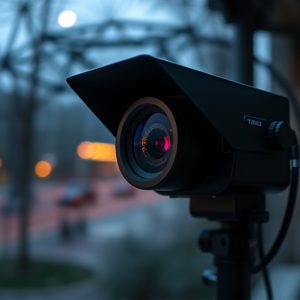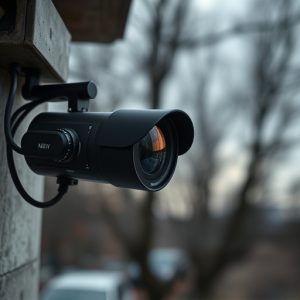Detecting Hidden Cameras: RF Guide for Safe Babysitter Monitoring
Hidden camera technology, disguised as everyday items, raises privacy concerns in babysitter monitor…….
Hidden camera technology, disguised as everyday items, raises privacy concerns in babysitter monitoring. Radio frequency (RF) signals used for wireless video transmission are vulnerable to interference and can be detected with specialized equipment. Parents should stay informed about new hidden camera tech, check local privacy laws, obtain consent, clearly mark camera locations, and maintain open communication when employing concealed cameras for peace of mind and child safety. RF detectors can uncover hidden cameras, fostering a safe environment through technology integration while avoiding false alarms by staying informed on latest camera technologies.
Uncover the world of concealed cameras and protect your privacy with our comprehensive guide. In an era where technology advances rapidly, understanding how to detect hidden cameras becomes essential, especially when monitoring sensitive areas like your home or babysitters’ rooms. This article explores various aspects of identifying these covert devices, from the legal perspective to practical detection methods using radio frequency (RF) signals. We provide valuable insights for parents considering Concealed Cameras for Babysitter Monitoring, ensuring a safe and secure environment for your loved ones.
- Understanding Hidden Camera Technology
- Legal Considerations for Monitoring
- Detection Methods Using Radio Frequency
- Practical Tips for Safe Babysitter Monitoring
- Common Mistakes to Avoid During Searches
Understanding Hidden Camera Technology
Hidden camera technology has evolved significantly, with devices becoming smaller, more sophisticated, and capable of operating on various frequencies. In the context of babysitter monitoring, concealed cameras are a concern due to their potential for privacy invasion. These cameras can be disguised as everyday objects like toys, clocks, or even light switches, making them hard to detect. They often employ radio frequency (RF) transmission to send video feeds wirelessly, posing a unique challenge in terms of detection.
RF signals are susceptible to interference and can be detected using specialized equipment that listens for unusual activity on specific frequencies. Understanding how these cameras operate on RF is crucial for effective monitoring. By staying informed about the latest in hidden camera technology, parents can take proactive measures to ensure their children’s safety and privacy, especially when hiring babysitters or nannies.
Legal Considerations for Monitoring
When considering the use of hidden cameras, especially for monitoring purposes like babysitting, it’s crucial to navigate a landscape of legal considerations. The privacy laws governing the use of surveillance equipment vary significantly across regions and can be complex. In many places, there are strict rules around the placement and operation of concealed cameras, particularly in homes or areas where individuals have a reasonable expectation of privacy, such as bedrooms or bathrooms.
For parents considering hidden cameras for babysitter monitoring, understanding these legal boundaries is paramount. It’s essential to check local laws and ensure that any surveillance equipment is installed and used in compliance with privacy regulations. This may involve obtaining consent from all parties involved, ensuring clear visibility of camera placements (to avoid hidden or covert installation), and maintaining transparent communication about the monitoring system’s existence.
Detection Methods Using Radio Frequency
The detection of hidden cameras, especially those used for clandestine surveillance like concealed cameras for babysitter monitoring, has evolved with technological advancements in radio frequency (RF) technology. One effective method involves using RF detectors designed to pick up signals from active devices. These gadgets emit electromagnetic waves that can be intercepted by sensitive antennas, revealing the presence of hidden cameras and their location. This approach is particularly useful when combined with other detection techniques as it helps pinpoint specific areas where surveillance equipment might be hidden.
RF detection is a non-invasive method that allows individuals to check for potential privacy breaches without causing any physical damage or disruption. By scanning through various RF bands, experts can identify devices broadcasting signals, enabling them to uncover concealed cameras that may be capturing sensitive information. This technology plays a crucial role in ensuring the safety and privacy of personal spaces, especially when it comes to monitoring environments like homes or daycares where trust is paramount.
Practical Tips for Safe Babysitter Monitoring
When it comes to monitoring babysitters, especially if you’re leaving your home for an extended period, it’s crucial to be proactive about hidden cameras. While it may seem paranoid, Concealed Cameras for Babysitter Monitoring can provide peace of mind and ensure the safety of your children. Consider installing a discreet camera in common areas where your babysitter spends time; this could be in the living room or kitchen, places where activities are visible without feeling invasive.
Ensure the camera has good audio capabilities to facilitate clear communication. Position it strategically so that it captures not only visuals but also any unusual noises or movements. Regularly check the feed and store recordings securely. Practicality meets technology here; you’re not just setting up a device, but establishing a safe environment for your family.
Common Mistakes to Avoid During Searches
Many individuals conducting searches for concealed cameras, especially those intended for babysitter monitoring, often fall into common traps that can compromise results. One significant mistake is assuming that a visible camera indicates an active hidden one—not all covert cameras are easily detectable. Visual inspections alone may not reveal sophisticated technology designed to remain unseen.
Another blunder is relying solely on specific frequencies or radio signals without proper context. Concealed cameras, particularly modern ones, employ advanced technology that might not fit neatly into conventional frequency categories. Using a blanket approach for detection could lead to false alarms or missing potentially malicious devices. It’s crucial to stay informed about the latest camera technologies and employ tailored search methods accordingly.
Detecting hidden cameras using radio frequency (RF) technology is a valuable skill in ensuring privacy and safety, especially when hiring babysitters. By understanding the legal boundaries and employing effective detection methods, parents can take proactive measures to protect their children without infringing on privacy rights. With practical tips and awareness of common mistakes, individuals can confidently navigate this modern challenge, fostering peace of mind while monitoring concealed cameras for babysitter activities.


